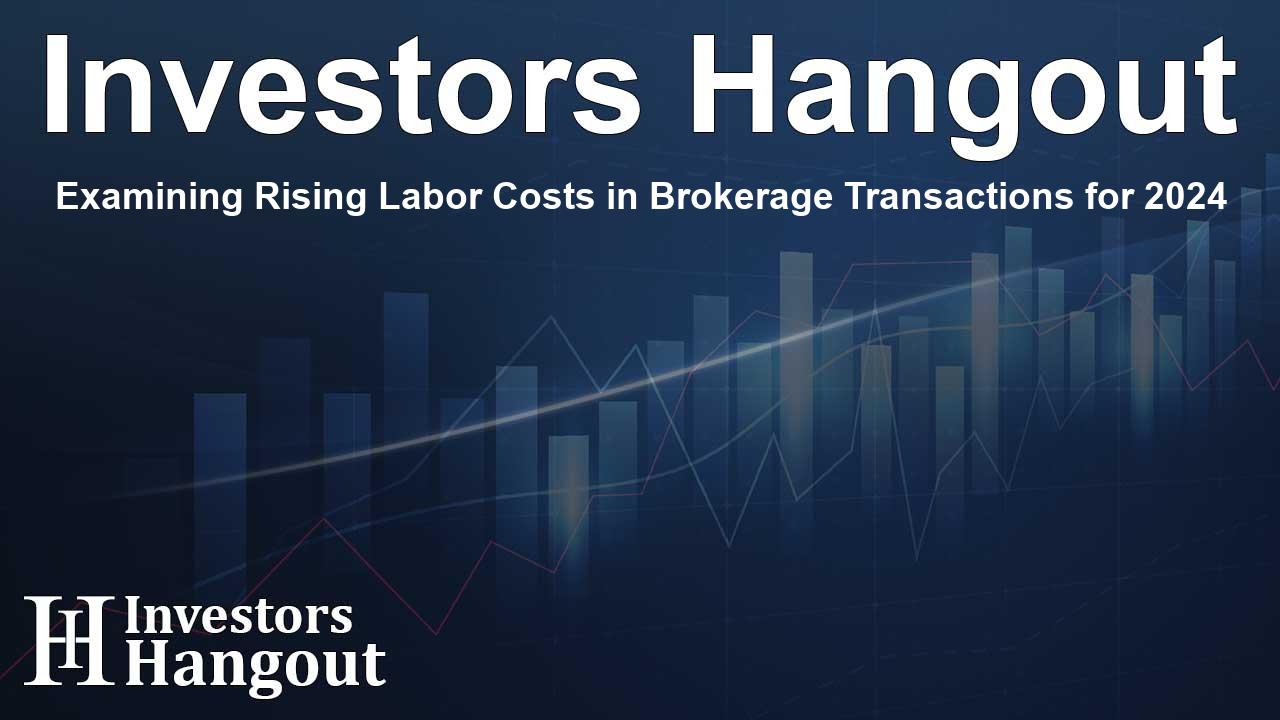Examining Rising Labor Costs in Brokerage Transactions for 2024

Understanding the Labor Costs in Real Estate Brokerage Transactions
In recent insights from the industry, labor costs associated with real estate transactions have surpassed $900 per transaction by mid-2024. A pivotal report from AccountTECH, a prominent accounting software and financial analysis firm, reveals significant data regarding these costs, focusing on first-half benchmarks.
Introducing the Benchmark Study
The report provides a comprehensive analysis of labor costs between January and June 2024, analyzing data from 100 carefully selected brokerages adhering to Generally Accepted Accounting Principles (GAAP). These brokerages closed a staggering 51,769 transactions with the support of 17,749 agents throughout this period.
Key Findings: Labor Cost Per Transaction
The data indicates that the average labor cost per transaction has reached $919.50. This finding illustrates a distinct increase compared to previous years, prompting many in the industry to take notice.
Breakdown of Labor Costs
- For profitable companies within the study, the average cost stood at $821 per transaction.
- Conversely, unprofitable brokerages experienced significantly higher labor costs, averaging $1,046.
Analyzing Profitability in Relation to Labor Costs
Interestingly, the study made a surprising discovery regarding the correlation between labor costs and profitability. While one might expect higher labor costs to indicate lower profitability, the analysis suggests otherwise. As the number of transactions increased, total labor costs did not follow suit, challenging conventional wisdom.
Unexpected Outcomes
Some surprising results include:
- High labor expenses did not always correlate with closing larger volumes of transactions.
- A spike in closed transaction counts did not guarantee an increase in profitability within brokerages.
Illustrative Examples of Labor Costs and Profitability
To further clarify these points, consider this example: One broker closed 248 transactions, incurring a labor cost of $1,150 per transaction, yet achieved a commendable 4.52% EBITDA margin. In stark contrast, another brokerage managed to close 250 transactions at $723 each but ended up posting a loss with an EBITDA margin of negative -0.05%.
The Burden of Labor Costs in Real Estate
Labor holds the status of the largest expense category across real estate brokerages. Notably, even those with high labor costs can remain profitable. Insights reveal that approximately 24.14% of the successful brokerages in this study possessed elevated labor expenses ranging from $1,100 to $4,400 per transaction yet still managed to maintain profitability.
Changing Perceptions of Labor Cost Management
Traditionally, brokerages believed increasing the agent count would result in higher transaction counts and, subsequently, lower costs per transaction. However, this study finds that labor costs do not necessarily decrease in tandem with agent growth or increased transactions.
Innovative Approaches to Labor Costs
Addressing the rigidity of labor costs, Joe Peront, CFO of Century 21 Northeast, advocates a cost accounting strategy highlighting fixed costs and variable costs associated with transactions. He notes the necessity of adapting labor management strategies to the shifting market landscape.
AccountTECH’s findings suggest that the industry must reevaluate labor cost benchmarks, moving away from conventional metrics based on transaction or agent count. This fluid approach is essential for helping companies optimize profitability amid evolving market conditions.
Conclusion: The Future of Labor Costs in Real Estate
As the analysis concludes, it becomes evident that labor costs serve as a critical indicator of profitability within real estate brokerages. While attempting to predict profitability through transaction counts is unreliable, understanding labor costs as a proportion of overall revenue seems to be a more dependable method for forecasting net profits.
AccountTECH subscribers can eagerly anticipate the full study results and forecasting tools set to appear in the darwin.Cloud software's Spotlight section.
Frequently Asked Questions
What is the average labor cost per transaction in 2024?
The average labor cost per transaction has reached $919.50 in the first half of 2024.
Do high labor costs correlate with profitability?
No, the study found that high labor costs do not necessarily indicate unprofitability.
How many companies were analyzed in the study?
A total of 100 brokerages were included in the analysis to maintain accuracy.
Can labor costs be adjusted during fluctuating transaction volumes?
The report suggests that labor costs often remain static despite variations in transaction volumes.
What should brokerages focus on for improving profitability?
Brokerages should reevaluate their labor cost benchmarks and focus on understanding labor as a percentage of total revenue for predicting profitability.
About The Author
Contact Lucas Young privately here. Or send an email with ATTN: Lucas Young as the subject to contact@investorshangout.com.
About Investors Hangout
Investors Hangout is a leading online stock forum for financial discussion and learning, offering a wide range of free tools and resources. It draws in traders of all levels, who exchange market knowledge, investigate trading tactics, and keep an eye on industry developments in real time. Featuring financial articles, stock message boards, quotes, charts, company profiles, and live news updates. Through cooperative learning and a wealth of informational resources, it helps users from novices creating their first portfolios to experts honing their techniques. Join Investors Hangout today: https://investorshangout.com/
The content of this article is based on factual, publicly available information and does not represent legal, financial, or investment advice. Investors Hangout does not offer financial advice, and the author is not a licensed financial advisor. Consult a qualified advisor before making any financial or investment decisions based on this article. This article should not be considered advice to purchase, sell, or hold any securities or other investments. If any of the material provided here is inaccurate, please contact us for corrections.
